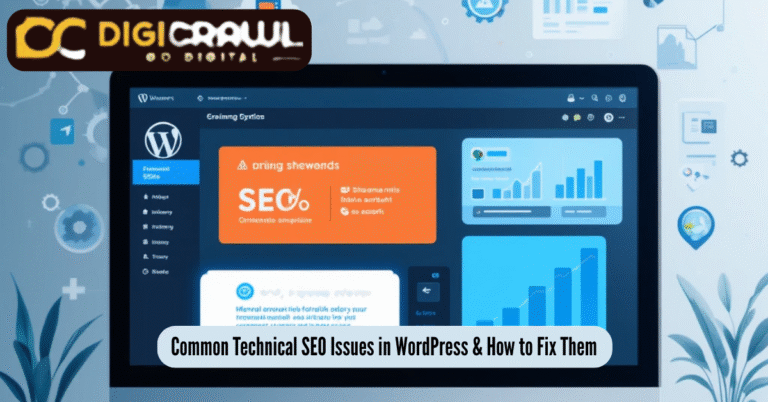The Role of Content Delivery Network (CDN) in Search Engine Dominance
In today’s competitive online landscape, having a fast website is important for attracting visitors. This is where a Content Delivery Network (CDN) comes into play.
Table of Contents
ToggleA CDN is a network of servers strategically located worldwide, designed to deliver content quickly and efficiently to users. By caching frequently accessed data and reducing the distance between the server and the user, CDNs enhance the speed and performance of websites.
As more businesses recognize the importance of a seamless user experience, CDNs have become vital parts of digital marketing strategies. In this article we will discuss how CDNs work, their impact on search engine rankings and why CDN are necessary for online success.
You might enjoy to read this: Benefits Of Hiring A Website Design Company
Importance of CDNs in SEO
The significance of a Content Delivery Network (CDN) in search engine optimization (SEO) cannot be overstated. By distributing website content across multiple servers worldwide, CDNs ensure that users access data from the nearest location, resulting in faster load times.
When a website loads quickly it enhances user experience. A key factor that search engines like Google consider when ranking websites. A quicker website having lower bounce rates as visitors are less likely to leave if the content appears instantly.
CDNs help maintain website reliability, boosting a website’s credibility in search engines. In summary, implementing a CDN improves site performance and plays a vital role in achieving better search engine rankings.
How Does a CDN Work?
A Content Delivery Network (CDN) uses a network of servers worldwide to deliver website content quickly and efficiently. When you visit a website, instead of connecting to a single central server, your request is automatically routed to the nearest server in the CDN.
This server, known as a network node, has cached copies of the website’s content, such as images, videos, and text files. By fetching data from a nearby node, loading times are significantly reduced, enhancing your experience on the site.
If the requested content isn’t available on the nearest server, the CDN retrieves the latest version from the central server and updates its cache for future requests. This process speeds up content delivery and helps manage high traffic loads by distributing requests among multiple servers, keeping websites stable and available.
Additionally, CDNs optimize content based on the user’s device and connection speed, ensuring a seamless experience for everyone. A CDN improves website performance, user engagement, and security, making it an essential tool for any online presence.
Types of CDNs
There are several types of Content Delivery Networks (CDNs), each designed to meet the specific needs of different businesses and applications:
- Public CDNs: Widely accessible and commonly used, these networks are ideal for general content delivery.
- Private CDNs: Tailored to meet an organization’s unique requirements, private CDNs offer more control and security over content distribution.
- Hybrid CDNs: By combining elements of public and private networks, hybrid CDNs provide flexibility for businesses that require a combination of both solutions.
- CDNs for Static Content: Focused on delivering unchanging files like images, CSS styles and JavaScript to ensure quick access for users.
- CDNs for Dynamic Content: Specializing in real-time data that changes frequently, these CDNs ensure efficient interactive content delivery.
- CDNs for Video and Audio Streaming: Optimized for multimedia delivery, these networks provide smooth and uninterrupted streaming even during high demand.
- Application Delivery CDNs: Designed to enhance the performance of web and mobile applications, ensuring better interactivity and user experience.
- Security CDNs: These networks emphasize online security and protect against threats like DDoS attacks by serving as a shield between users and the origin server.
Choosing the correct type of CDN depends on factors such as your business size, audience location and specific content needs, making it essential to consider your options carefully.
Key Benefits of Using a CDN
Using a Content Delivery Network (CDN) offers many significant advantages that enhance website performance and security. One of the main benefits is faster loading times. By distributing content across multiple servers closer to users, CDNs reduce latency, meaning visitors can access your site much quicker.
This speed improves user experience and search engines like Google reward faster sites with better rankings. Another key benefit is increased reliability. If one server goes down, another server in the network can provide data, ensuring that your website remains available to users. This high uptime is essential for maintaining trust and SEO.
CDNs also help reduce bandwidth costs, caching frequently requested content lowers the data your central server needs to provide. Furthermore, CDNs enhance security by offering protection against DDoS attacks and other cyber threats.
With these advantages, a CDN is crucial for any website that aims to deliver excellent performance, stay secure and maintain a solid online presence.
Implementing a CDN for Optimal Results
Setting up a Content Delivery Network (CDN) effectively improves your website’s speed, security and user experience. The process starts by selecting a reliable CDN provider. Top CDN options like Cloudflare, Akamai and Amazon CloudFront offer features that cater to different budgets and website requirements, allowing you to choose one that aligns with your specific needs.
Assess Your Needs: Assess what your website or application requires before implementing. Identify the type of content you will be distributing, whether static files like images and scripts, dynamic pages or multimedia content. Understanding your audience’s geographic distribution is also crucial, as this will guide you in selecting a provider with a strong presence in the regions you serve.
Choosing the Right CDN Provider: Each CDN provider has unique features, so compare factors like geographical coverage, technology, integration ease, cost and support options.
For example, if your audience is primarily based in the U.S., choose a CDN with multiple points of presence to ensure optimal load times. A provider with a robust international network may be a better fit for global traffic.
Configuring and Integrating the CDN: Once you have chosen a provider, it is time to configure the CDN settings. Set up a subdomain, define cache rules and customize security settings. Then, integrate the CDN with your website by updating static resource links to point to the CDN. This step ensures users are served content from the closest server, significantly boosting load times.
Testing and Optimization: Before going live, perform tests to confirm that everything works as expected. Check load speeds, cache functionality and security settings across different geographic locations. Tools like Google Analytics or dedicated performance monitoring software can be used to gauge CDN effectiveness and identify areas for improvement.
Ongoing Monitoring and Maintenance: Continuously monitor the CDN’s performance after implementation. Track metrics like load times and cache hit rates to ensure everything remains efficient.. Address any security or performance issues as they arise to maintain a seamless experience for users.
Future Updates and Scalability: As your website grows, you may need to adjust CDN settings to handle increased traffic or new content types. Choose a CDN provider that supports scalability, allowing you to adapt your configuration over time. Staying updated with your provider’s latest features and improvements will help you maintain a competitive edge.
In Conclusion, by carefully implementing and maintaining a CDN, you can achieve faster load times, enhanced security and improved SEO, ultimately creating a better user experience. Investing in a CDN is a strategic choice to boost your website’s visibility, traffic and overall online presence.
Ready to Boost your Website’s SEO Performance ?
Contact Digicrawl, We would like to help you grow your online presence with our SEO plan made just for your business. Our team of SEO Services in Pakistan is ready to work with you to create the best SEO campaign possible. Make a call at 92 315 5111199 or contact us today at info@thedigicrawl.com.







